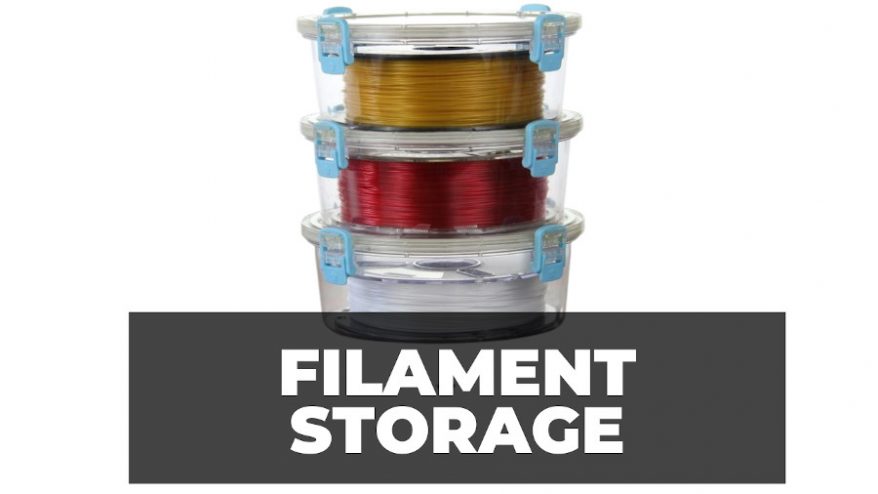
A writer needs a pen to write, a filmmaker can’t shoot without a camera, and without working filaments, 3D printers are just big expensive bricks.
Like a bucket of paint, a blank page, or a sculpture block, 3D printer filaments are full of potential and waiting to be turned into something special. But like many materials, filaments have their own shelf lives.
Much like how we put milk in the fridge to keep it from spoiling, our choice of 3D printer filament storage preserves hygroscopic filaments from becoming ‘wet’. Not only do certain filaments wear away faster than most, but the consequences of poor filament storage range from warped and brittle prints to even damaging your 3D printer.
The shelf life and signs of wear differ between different filaments, and here we’re going to look at how different kinds of filament age, why they wear down over time, and what can be done to slow the process.
What Makes 3D Printer Filament Wear Down?
Most 3D printer filaments are hygroscopic, meaning they absorb atmospheric moisture over time. This moisture affects the usability of the filaments as the absorbed moisture causes the filament to swell in ways that may not be immediately visible to the naked eye.
While this may not seem like a big deal on paper, the exact size that filaments and extruders are designed is no accident. Even a human hair’s width difference can affect filament performance.
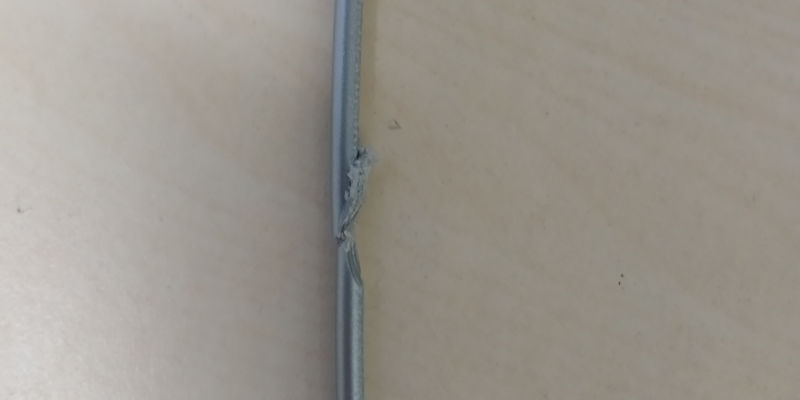
While the hygroscopic nature of 3D printer filaments is its most damaging trait, keep in mind that other environmental factors will play a role in how quickly a filament expires. Filament storage is needed to also avoid prolonged exposure to harsh heat, UV light, and sunlight which can fade the colors as well as damage the material.
While UV light damage is far less likely to be a concern in the average home, it should be known that is one of the most damaging things for filaments, and being left in the sun for long periods of time will cause irreversible damage to some filaments including ABS and PETG.
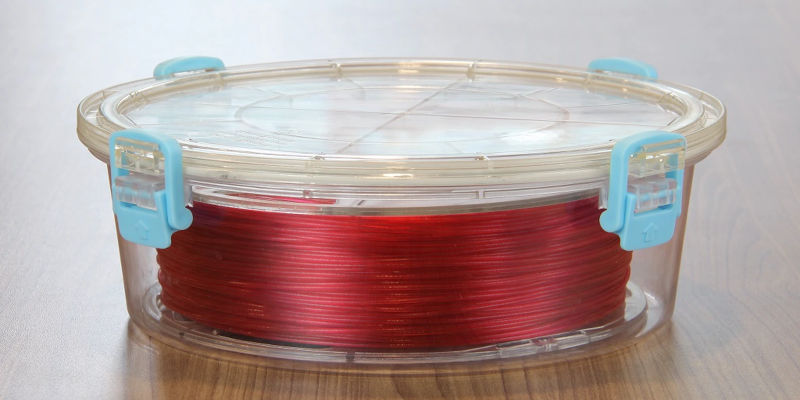
While humid, hot, or generally wet surroundings are very bad for 3D printer filaments, this doesn’t mean that simply keeping them dry will make them last forever. Atmospheric moisture is all around us, and filament will absorb it over time regardless of how careful you are.
In order to maximize the shelf life, we’ve picked out some of the best 3D printer filament storage options depending on the kind of filament you use and how susceptible it is to these outside factors.
How do I Tell if a Filament has Become Worn Down?
Most filaments will show the same telltale signs of age and degradation. If you’re careful, you’ll be able to spot this age before you attempt to print with worn down filament, lessening the risk to your printer and projects.
Hygroscopic filament that has absorbed too much moisture won’t be obviously larger on a simple observation, but you can tell if it has expanded too much by looking for holes in the filament thread. These holes are a sign of stretching and will indicate that the filament has expanded too much.
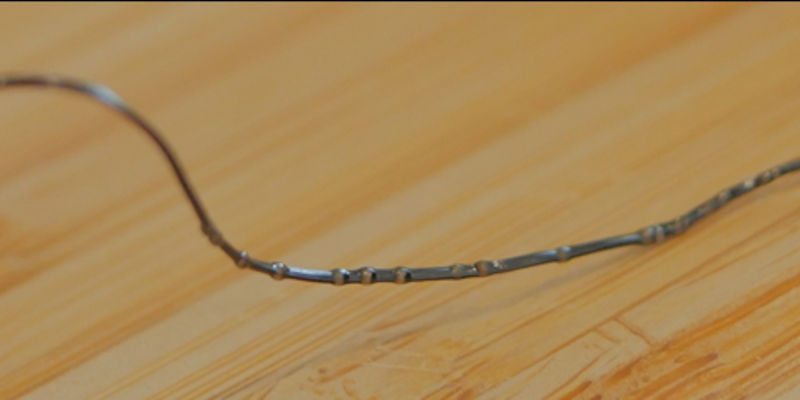
If you don’t manage to catch these problems but are still a little doubtful as to how long you’ve had your filament, then you should listen out for a particularly off sizzling noise when feeding your filament into a heated nozzle.
If this noise isn’t present, you’ll be able to tell if your filament is too wet by observing its bed adhesion. Wet filament will have poor bed adhesion and be very prone to warping, you’ll also notice that your prints come out with holes and misshapen parts.
The long-term effects of using worn or expired filament can be dangerous and expensive. Frequent clogs and extensive nozzle damage will occur if left unchecked.
What is the Best 3D Printer Filament Storage Method?
Your choice of 3D printer filament storage will depend on a few things. Mainly how naturally susceptible the filament is and when you plan on using it.
If you’ve just got a new 3D printer and have a dozen and one things in mind, then filament storage won’t be at the front of your mind because you’ll likely use all – or at least most – of it within a few days anyway.
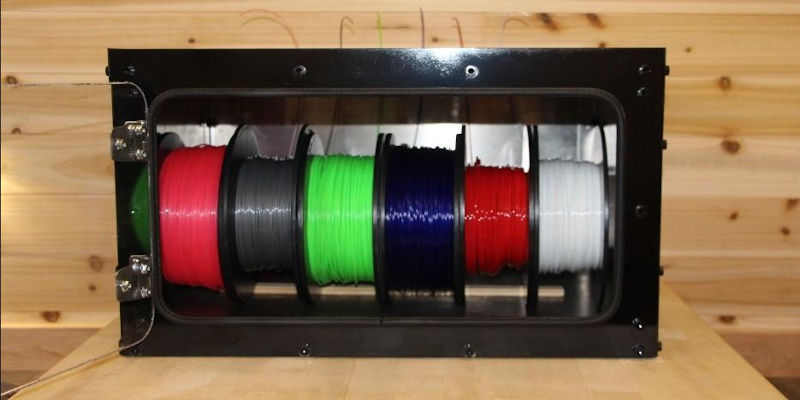
If you’re the kind to bulk-buy, or just like to make sure you have filament on hand for when inspiration or necessity strikes, then you’re going to need to consider 3D printer filament storage carefully to ensure reliability and reduce the risk of damaging your prints and your printer.
Here are some of the various 3D printer filaments, their shelf lives, and how best to store them for longer lasting materials. Thought it is worth noting that no filament should be stored in open air.
PLA
- Lifespan without filament storage: ~3 months
- Lifespan with filament storage: ~2 years
- Best filament storage option: Airtight box out of direct sunlight
- Best corrective measure: Air purifier
ABS
- Lifespan without filament storage: ~3 months
- Lifespan with filament storage: 5+ years
- Best filament storage option: Airtight container out of direct sunlight and away from any UV light
- Best corrective measure: Blower dryer (if problems are caught on time) or air purifier
PETG*
- Lifespan without filament storage: Up to 6 months
- Lifespan with filament storage: 3+ years
- Best filament storage option: Vacuum sealed box or bag
- Best corrective measure: None, but can be somewhat salvaged if carefully blow dried
*It is worth noting that PETG is less sensitive to UV light than ABS and PLA, but is far more susceptible to moisture absorption, so vacuum sealed containers are the most reliable standard filament storage method.
Best Options for Filament Storage
While airtight boxes may help make your materials last longer, there are some specialty filament storage options that provide solutions to common degradation problems like temperature control and vacuum sealing.
If you’re using an airtight box, you can expect to keep most filaments for about a year before they age too much, but with specialty filament storage, you can make anything from PLA to Nylon last far longer.
Here are some of the best specialty filament storage options available today.
3DSourced is reader-supported. When you buy through links on our site, we may earn an affiliate commission. Learn more
Matterhackers PrintDry Filament Drying System & Storage System
- Drying System Price: $179 — Available at Matterhackers here
- Storage System Price: $99 — Available at Matterhackers here
If you’ve ever worked in a bar or grew up in a household that rationed soft drinks, you may know of the concept of a fizz-keeper. Essentially, they’re small air pumps that render soda bottles airtight, which makes them stay carbonated for longer.
Matterhackers’ PrintDry system works in very much the same way. At a glance, they look like simple plastic containers, but their pump system vacuum seals your filaments away.
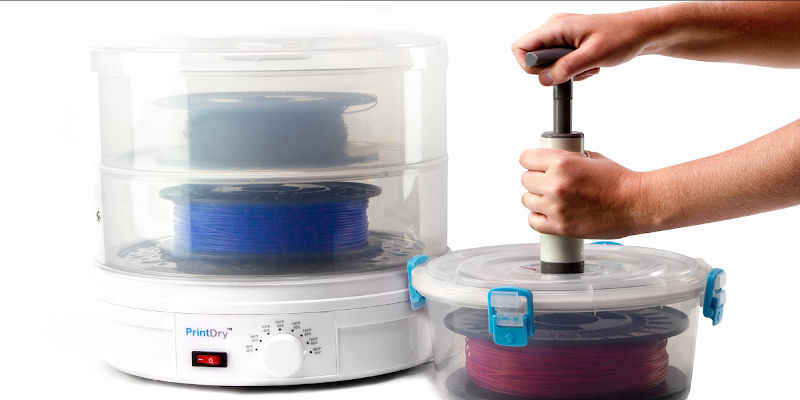
The best thing about the PrintDry system is that it doesn’t need to be used right away. If you’re worried that your filament has already absorbed moisture and want to minimize the risks of that, you can use the PrintDry system to dry your filament before use.
Essentially, this means that the Matterhackers’ PrintDry system not only works as a filament storage device, but also as a preparation method to ensure the filament is ready for printing without worries, provided they aren’t too far gone.
Sunlu Dry Box
- Price: $49 — Available on Amazon here
The Sunlu Dry Box is similar to many viable filament storage containers with a key difference in that its internal temperature can be monitored and controlled.
This is good news for people who live in particularly cold areas or simply want to ensure that their filament is kept in optimal condition.
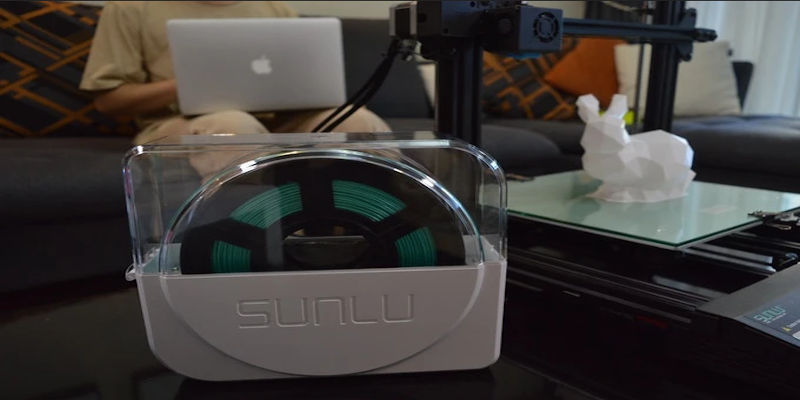
Much like the PrintDry system, the Sunlu Dry Box can also act as a dehydrator, helping to dry out from filaments that have already been exposed to atmospheric moisture.
The Dry Box, however, isn’t financially viable for those of you who want to store a lot of filament spools at once. At $49.99 each, they can only hold 1kg of filament at a time, making them a very costly choice if you’re storing more than a couple of filament spools at a time.
Dry Cabinet
The dry cabinet wasn’t designed with specifically filament storage in mind, but its marketability towards photography equipment and the general protection of devices and materials that are prone to moisture absorption. Naturally, this makes it the perfect choice for 3D printer filament storage.

The main draw of the dry cabinet as filament printer storage is its size. The larger model can hold at least ten rolls of filament depending on their size. While not the most sophisticated of storage options, the dry cabinet is a good choice if you want to store a lot of filament at once in an environment suitable for hygroscopic materials.
Vacuum Seal Bags
A low-tech solution that’s great if you’re low on pace is a simple pack of vacuum seal bags.
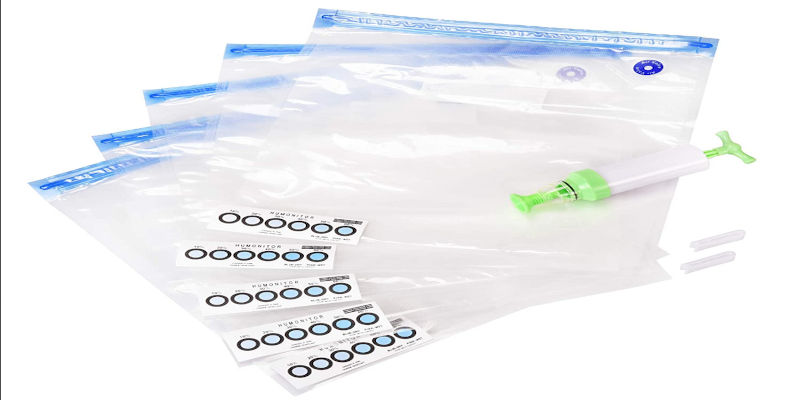
The ultimate in airtight containers, and very cheap at that, they are an ideal 3D printer storage option if you want to keep your filament protected without spending a lot of money or having to clear out a new space at your workstation.
Related articles:




